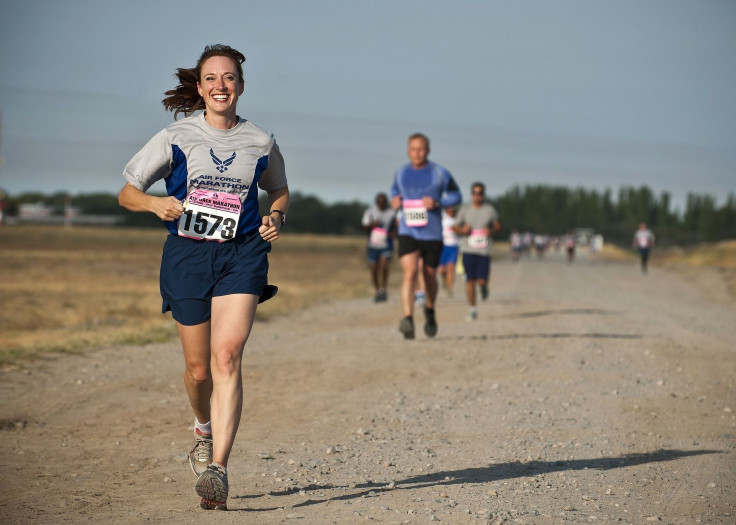Teens Just As Inactive As Seniors, Study Says

Apparently, we are a country that loves to sit inside and marathon watch "The Handmaid’s Tale." A new study revealed that activity levels in America are low—much lower than previously thought, in fact.
Read: Exercise And Cancer Risk: People Who Are More Active May Handle Lactic Acid Better
Researchers at Johns Hopkins University monitored the activity levels of more than 12,500 people. Participants of all ages and genders wore tracking devices for one week so scientists could determine when activity levels peaked or declined. They found that while younger people are generally thought of as being more active, that wasn’t necessarily the case.
“Activity levels at the end of adolescence were alarmingly low, and by age 19, they were comparable to 60-year-olds,” said the senior author of the study, Dr. Vadim Zipunnikov, assistant professor in the Bloomberg School’s Department of Biostatistics, in a statement.
The most active Americans are in their 20s, and this was the only age group that actually saw an increase in activity, which is distributed throughout the day, but heaviest in the morning. However, once people hit age 35, activity levels start to decline.
The team analyzed data from the National Health and Nutrition Examination Survey from the years 2003 and 2005. Roughly the same number of males and females participated, and activity levels were measured and categorized by age groups: children (6 to 11 years old); adolescents (12 to 19); young adults (20 to 29); midlife (31 to 59); and older adults (60 to 84).
The study also indicated that men were typically more active than women, especially when it comes to high-intensity activity. However, once people hit their middle years, men moved less than women. In older adults, guys were less active.
Zipunnikov and his team believe these results can help us find solutions about our couch potato crisis, starting with young children.
“For school-age children, the primary window for activity was the afternoon between two and six p.m.," he said. "So the big question is how do we modify daily schedules, in schools for example, to be more conducive to increasing physical activity?”
With decreasing budgets, many schools are cutting physical education classes. According to the Chicago Tribune, almost 1,200 Illinois schools have cut PE classes due to lack of staff or facilities. Elementary schools were hit the hardest as younger children only receive about two to three days of PE on average.
Read: Fitness Video Games May Be Good For Cognitive Performance, Enhanced Memory
Aside from the obvious health benefits, kids who are physically active do better in school.
The Chicago Tribune writes that the Illinois Report Card’s health section notes that, “A healthy, physically active student is more likely to be alert and successful in academic endeavors." The report also included the amount of activity that most kids need. “Many health organizations recommend that children and adolescents participate in at least 60 minutes of moderate to vigorous physical activity every day in order to help prevent childhood obesity, diabetes, and heart disease."
In addition to the amount of activity, Zipunnikov believes this new study also shifts the focus on type of activity. While many might think of rigorous gym sessions, he believes even light activity has major benefits.
“The goal of campaigns aimed at increasing physical activity has focused on increasing higher-intensity exercise,” says Zipunnikov. “Our study suggests that these efforts should consider time of day and also focus on increasing lower-intensity physical activity and reducing inactivity.”
See Also:
Treadmill Users Need To Run 15 Percent Faster To Get The Same Workout As Running Outdoors
Easy Tips To Stay Healthy While Vacationing: Water Down Drinks With Seltzer, Beach Running, And More
Published by Medicaldaily.com



























